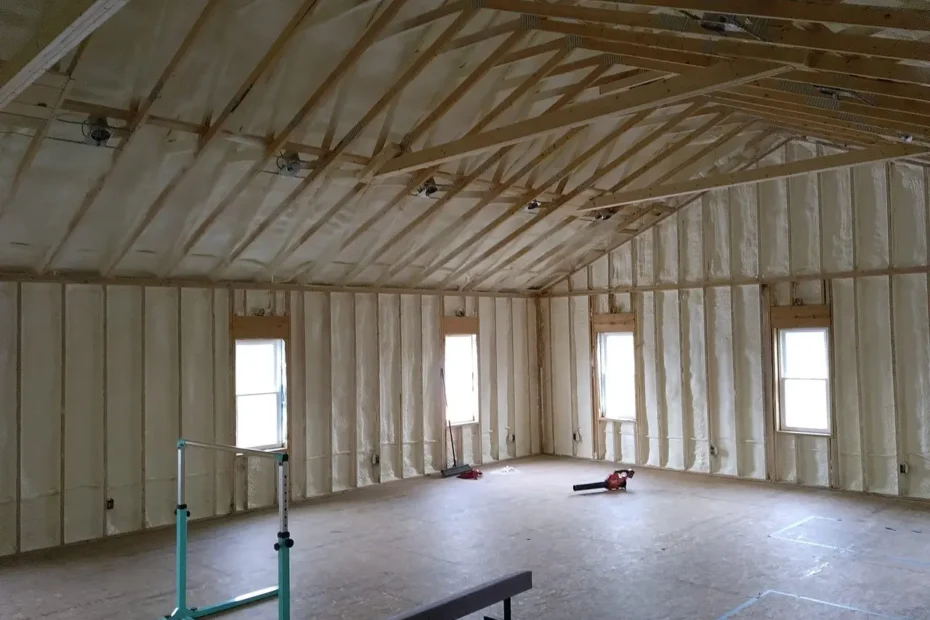In the world of insulation and energy efficiency, understanding the role of thermal barriers can help homeowners make informed decisions about their property. This blog aims to demystify what thermal barriers are and discuss their importance when using spray foam insulation.
What is a Thermal Barrier?
A thermal barrier is a material or layer that helps to limit the transfer of heat, providing insulation and energy efficiency in buildings.
Typically made from various materials, such as drywall or specialized boards, thermal barriers can be strategically installed to protect living spaces from heat loss. These barriers are especially important in attics, basements, and walls adjacent to unconditioned spaces.
In essence, a thermal barrier acts as a shield that enhances a building’s energy performance. By reflecting or absorbing heat, these barriers contribute significantly to indoor comfort, ensuring that your heating and cooling systems operate more efficiently.
Furthermore, thermal barriers help manage moisture and condensation, which can lead to structural damage over time. By keeping heat from escaping or entering, these materials maintain a stable indoor environment, reducing the likelihood of mold growth.
Importance of Thermal Barriers in Spray Foam Insulation
Thermal barriers play a crucial role in ensuring the effectiveness of spray foam insulation by preventing heat loss and protecting against fire hazards.
When applying spray foam insulation, the choice of a suitable thermal barrier is paramount. It not only boosts the insulation’s efficiency but may also be required under local building codes. By adhering to these regulations, homeowners can ensure that their insulation is compliant and safe.
Beyond mere compliance, understanding how thermal barriers function can significantly improve a home’s energy performance. In colder climates, these barriers can create an envelope that retains warmth during winter, while in hotter regions, they help to keep cool air inside.
Since spray foam expands upon application, having a thermal barrier installed allows for better control over the insulation thickness. This balance further enhances energy savings, proving beneficial in the long run.
When is a Thermal Barrier Necessary?
Thermal barriers are typically required by building codes in areas where foam insulation is exposed to living spaces or in specific applications.
Commonly, a thermal barrier is necessary in attics and crawl spaces, areas that house mechanical equipment or where the foam insulation could be directly exposed. In such cases, the thermal barrier acts as a protective measure against potential fire hazards.
Additionally, if the foam insulation is located within walls shared with living spaces, a thermal barrier is mandated. This ensures that any heat generated does not negatively impact the interior comfort of those spaces.
Lastly, understanding the specific requirements of your local building codes can help you determine when to implement a thermal barrier. Consulting with a professional can ensure that your installation complies with all safety regulations.
Choosing the Right Thermal Barrier Material
Selecting the appropriate thermal barrier material is essential for compliance with regulations and maximizing insulation performance.
Several options exist, including drywall, plywood, or specialized thermal barrier paints. Each material has its advantages and potential applications, which can vary based on the specific needs of your property.
For instance, drywall is often the go-to choice for simple applications because it is both affordable and easy to install. Conversely, specialized boards provide enhanced insulation values if you’re seeking superior performance in particular areas.
In addition to material type, consider the insulation’s R-value, which measures its ability to resist heat flow. The higher the R-value, the more effective the thermal barrier will be in a specific application.
Installing Thermal Barriers with Spray Foam
Proper installation of thermal barriers is critical to ensure that the spray foam insulation functions effectively and meets safety standards.
Installation typically requires a professional approach, as improper application can diminish the benefits of the thermal barrier, leading to issues such as significant heat loss or even fire hazards.
During the installation process, the thermal barrier must be applied uniformly and sealed to create an airtight seal. This ensures that the foam and barrier work together cohesively to optimize energy efficiency.
Moreover, it’s crucial to adhere to manufacturer guidelines and local building codes. This not only guarantees safety but also protects the investment you’re making in your home’s insulation and comfort.
Final Thoughts on Thermal Barriers
Understanding thermal barriers is essential for homeowners considering spray foam insulation. By ensuring proper installation and compliance with building codes, you can optimize energy efficiency and comfort in your home.
